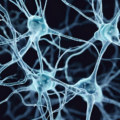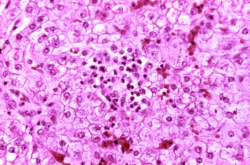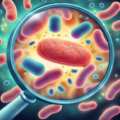We all know that exercise is good for us, but few know how truly important it really is. I work with a woman who was injured by Gardasil. Prior to her vaccination, she was healthy and active, but after the vaccination, immediately, and in the years that followed, she has endured a complex array of symptoms that included intense and unremitting fatigue, regular bouts of dizziness and syncope, hypersomnia, muscle pain, neuropathies, intense salt and water cravings, and excessive weight loss.
As we have worked to identify various possible culprits, and we have identified a few, one thing that struck me as absolutely fascinating is how she managed her ordeal, how she managed her dizziness, syncope and hypersomnia before knowing what was wrong. She managed with exercise (and salt, water, and now some medications). She told me, that although it was excruciatingly difficult at first, exercising reduced her dizziness. More specifically, aerobic exercise provided her with 4-6 hours of non-dizzy, non-blackout functioning, while weight-lifting could provide her with as much as 24 hours of functioning. This was intriguing, to say the least. What biochemical factors were altered by exercise that allowed her periods of functioning and how did the type of exercise moderate the duration of functioning?
Before I tell you what I think may be the answer, let me backtrack a bit and tell you about something else I have been pondering as of late, the nature of fatigue. Fatigue is one of those symptoms that is ubiquitous across so many syndromes that it is often overlooked as a clinically important indicator of anything. This is a shame because fatigue can tell us so much. Even with the syndrome that bears its name – chronic fatigue syndrome – the debates about the reality of fatigue as a meaningful physiological attribute of disease are rampant. What is fatigue? Where does it come from? Does chronic fatigue even exist?
What is Fatigue?
At its most basic level, fatigue is a lack of energy. And while there may be a myriad of environmental or outside sources of fatigue, like stress, workload, exercise, lack of sleep, poor nutrition, and even an array of disease states whose core symptoms include fatigue, the internal components of fatigue all point to a change in biochemistry that reduces cellular energy production and usage. Something in our external or internal environments flips an energy switch. What is that switch?
Mitochondria and Fatigue
Yes, I said mitochondria. Harken back to your high school biology, remember those energy powerhouses inside the cell, responsible for generating ATP – adenosine triphosphate – the cell’s chemical energy – without which, the cell dies. Even if you don’t remember, trust me on this, we need working mitochondria to survive. Mitochondrial disease can be devastating because it affects the most basic functioning of the cell, its energy usage. From a cellular perspective, damaged or deficient mitochondria impair all the major metabolic pathways necessary for building, breaking down or recycling the cell’s molecular machinery, even down to preventing DNA and RNA synthesis. And as logic would have it, organs that require the greatest energy are affected most by mitochondrial disease or injury; think heart, lungs, brain, liver, GI tract and muscles.
Mitochondrial injury or dysfunction can occur by a number of mechanisms, by an inherited mutation, a spontaneous mutation or by environmental factors. Mitochondria are particularly sensitive to all the toxic insults of modern living, bad food, sedentary lifestyle, stress, environmental chemicals, medications and vaccines. Over time, and after repeated exposures, these insults reduce mitochondrial functioning through a process called oxidative stress. All those ‘anti-oxidant’ concoctions on the market are to reduce oxidative stress.
Long story short, and by way of a gross over-simplification, low or dysfunctioning mitochondria create a myriad of complicated symptoms. Depending upon the organ(s) where the dysfunction occurs, that’s where disease develops. No matter where the mitochondrial insults take place, the loss of energy will lead not only the dysfunction of that organ system, but also, to an overall sense of fatigue. Thus, fatigue, at its most basic level, means some sort of mitochondrial loss of function. When fatigue is severe, unremitting and presents with what seems like a cluster of unrelated symptoms, it is very clinically relevant. Indeed, fatigue may be the key clinical indicator.
Exercise and Mitochondrial Biogenesis
What does all this have to do with exercise and our post Gardasil patient with symptoms that included fatigue, dizziness, hypersomnia, muscle pain, among others? Well, it turns out, a lot. Let’s begin with exercise.
Exercise increases mitochondria, in number and in size. The act of exercising tells our cells to produce more mitochondria. It’s called mitochondrial biogenesis. On the most obvious level, this makes perfect sense. When we exercise our demands for energy increase and to meet those needs our cells respond by birthing more of the machinery that produces this energy.
Not knowing any of this, or that post vaccine injuries could be attributable to mitochondrial insults (see our article about thiamine deficiency post Gardasil and oxidative stress), somehow, intuitively, our Gardasil injured woman felt she needed to exercise to survive and, unlike so many of us, she listened to her body. By exercising, she increased the number of mitochondria, effectively compensating for their deficits in functioning. Think about it, if you can’t have optimum energy production in the machinery you have, but you still need a certain amount of energy output to survive, increase the number of machines producing that energy. The exercise didn’t fix what was broken, but it may have helped her body to function and survive. She increased her cellular energy by exercising. And the increase in energy reduced her dizziness and blackouts.*
The fact that exercise may alleviate fatigue and do so by changing the most fundamental aspect of cellular functioning, points to the possibility of a wonderfully simple and elegant, non-medication based, therapeutic option for folks suffering with fatigue – related symptoms. Some physician/researchers suggest that exercise, under the guidance of trained experts, also improves symptoms associated with some mitochondrial related conditions.
I have not yet figured out why the different types of exercise yielded different levels of functioning, perhaps an exercise physiologist can weigh in and clarify that for us, but it is clear from this case and from the research materials on the subject of exercise and mitochondrial disease and injury that exercise is a critical component of maintaining or managing cellular energy requirements. Sometimes it is the most simple solutions that alleviate the most complicated of problems.
*Post Script
I should mention that exercise is in no way a ‘cure’ for the serious injuries and illnesses that she and others sustain. There is quite a bit of controversy regarding whether exercise is safe or effective for individuals with chronic fatigue and other conditions. Individuals with health issues should not begin an exercise program without consulting their healthcare provider. It should also be noted that the case presented here represents a particular history of symptoms and in no way reflects a prescription or recommendation for salt or water loading or even exercise.
Participate in Research
Hormones MatterTM is conducting research on the side effects and adverse events associated with Gardasil and its counterpart Cervarix. If you or your daughter has had either HPV vaccine (we hope to launch the male version soon), please take this important survey. The Gardasil Cervarix HPV Vaccine Survey.
To take one of our other Real Women. Real Data.TM surveys, click here.
To sign up for our newsletter and receive weekly updates on the latest research news and research participation opportunities click here.
To share your health story with our community, click here.
If you think what we do at Hormones Matter is worthwhile, contribute to our research programs and our continued health research reporting. Hormones Matter is totally unfunded and can use your help to continue operations. Crowdfund Hormones Matter – Buy an Unsubscription.














